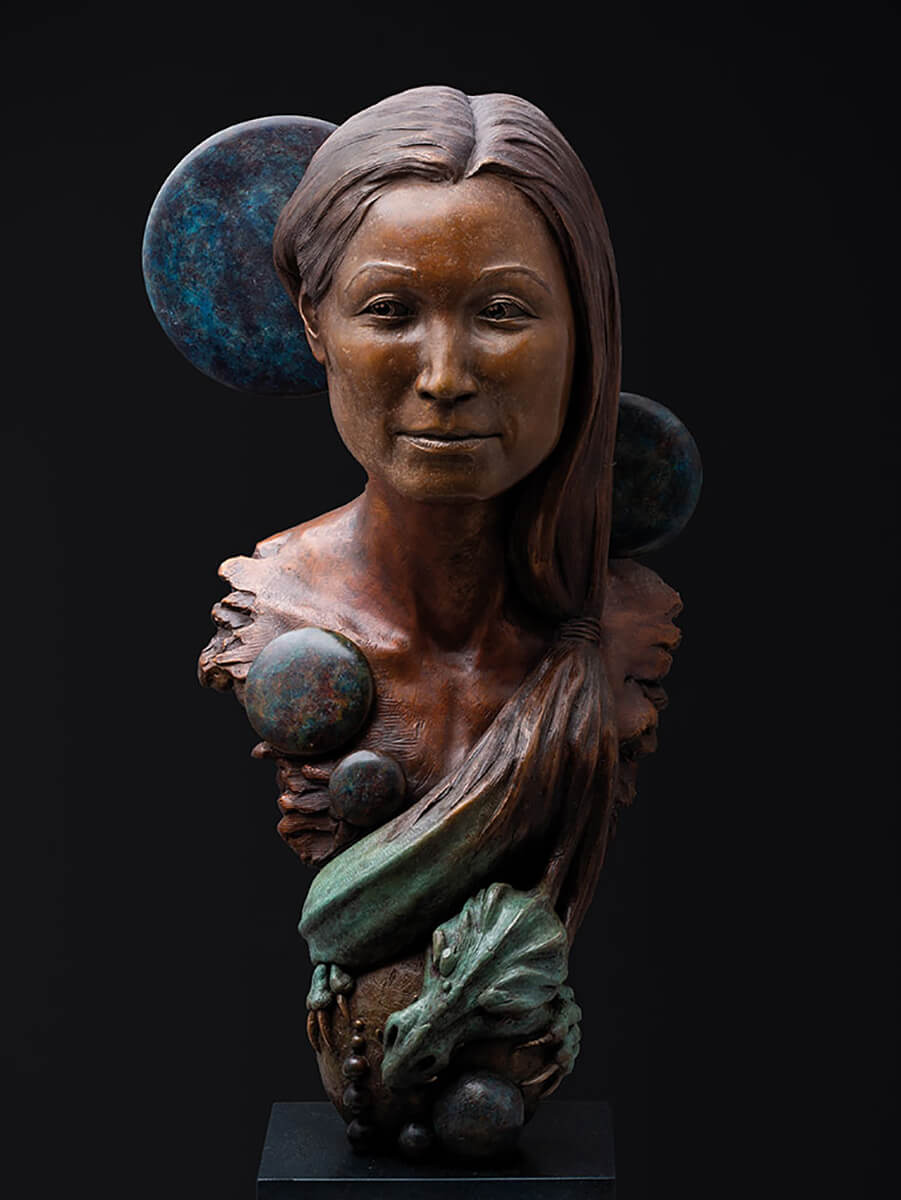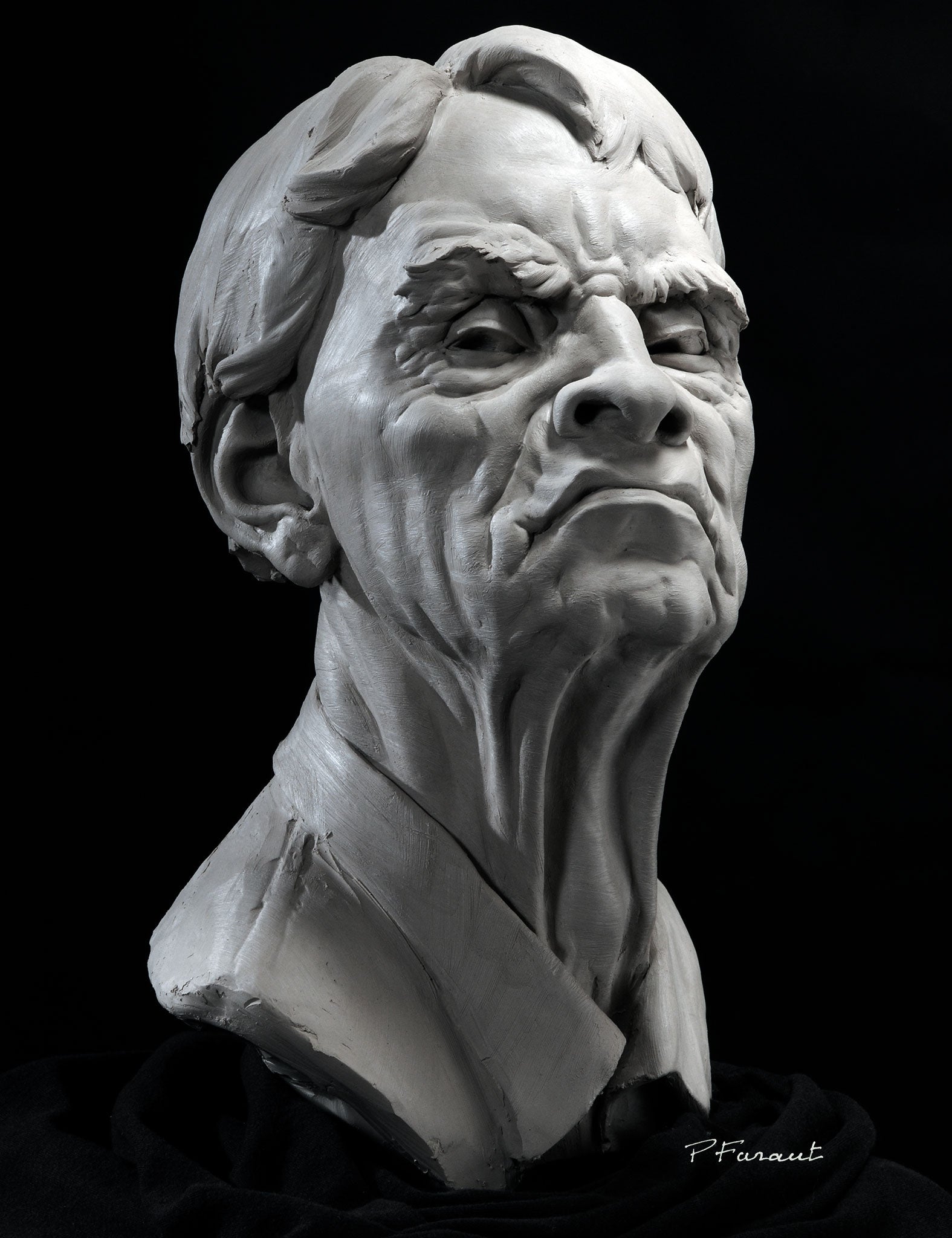Artistic Evolution: From Classic to Modern with Bronze Sculptures
Wiki Article
The Influence of Nature in Sculpture Art
The impact of nature in sculpture art is a topic that has mesmerized artists throughout history. Importance of natural elements is another method in which nature affects sculpture, as artists imbue their creations with the definition and associations integral in these components - Robert C Hitchcock Sculptor. Eventually, sculpture art has the power to record the transience of nature, freezing a minute in time and enabling us to appreciate its appeal in perpetuity.Organic Forms and Forms
Organic kinds and forms, inspired by the unified frameworks and elaborate patterns discovered in nature, play a critical duty in the world of sculpture art. Sculptors have actually long been captivated by the charm and intricacy of the natural world, locating motivation in the stylish contours of a seashell, the delicate petals of a blossom, or the twisting branches of a tree. By imitating and extracting these organic forms, artists have the ability to create sculptures that stimulate a feeling of consistency and balance.One of the reasons natural types and shapes are so widespread in sculpture art is their capability to connect with viewers on a deep psychological level. The all-natural world recognizes to us all, and when we see these forms stood for in art, it generates a feeling of convenience and acknowledgment. It reminds us of our place in the grand plan of points and permits us to get in touch with something better than ourselves.
In addition, organic forms and forms in sculpture art frequently symbolize a feeling of movement and energy. The moving lines and vibrant compositions imitate the constant movement and development found in nature. This creates a sense of vitality and brings sculptures to life, making them look like if they can proceed to change and evolve prior to our eyes.
Structure and Material Expedition
A substantial aspect of sculpture art influenced by nature is the expedition of structure and products with using various techniques and mediums. Musicians usually draw ideas from the diverse structures found in the natural world, such as the rough bark of a tree, the smooth surface area of a pebble, or the complex patterns on a fallen leave. By incorporating these textures into their job, artists can produce a responsive experience for viewers, welcoming them to involve with the artwork on a sensory degree.Texture can be accomplished in sculpture via a variety of techniques. Some musicians choose to sculpt or shape straight into the chosen material, developing a three-dimensional surface area that resembles the appearances located in nature - Figurative Sculptures.
Product exploration is likewise a considerable part of sculpture art affected by nature. Artists might venture into uncharted area, seeking brand-new products that stimulate the significance of the natural world. They may include natural aspects like branches, leaves, or even soil into their sculptures, obscuring the boundaries between art and the environment. By pressing the boundaries of standard products and strategies, carvers can produce aesthetically spectacular and conceptually abundant jobs that commemorate the charm and diversity of nature.
Symbolism of Natural Components
The unification of all-natural aspects in sculpture art includes a layer of importance and depth to the art work. By making use of products found in nature, sculptors are able to imbue their productions with significance that resonates with audiences on a profound level. Natural components such as wood, stone, and plants have been used throughout history to communicate different symbolic messages.Sculptures crafted from this product can evoke a feeling of link to the earth and the cycles of life. Sculptures sculpted from rock can symbolize the timeless nature of certain concepts or principles.
Flowers and plants are likewise frequently integrated right into sculpture art, representing motifs of growth, revival, and charm. The delicate petals and lively shades of flowers can stimulate sensations of happiness, while the intertwining branches of plants can represent interconnectedness and unity.
Along with these all-natural products, sculptors might additionally make use of natural components such as wind, fire, or water to further enhance the symbolic message of their artwork. These aspects can represent the transformative power of nature, the flow of time, or the forces that shape our world.

Reflections of the Setting
Representations of the Atmosphere can be seen in sculpture art via the consolidation of natural aspects and the representation of ecological motifs. Artists frequently attract inspiration from the setting, using materials such as timber, stone, or perhaps recycled products to develop their art work. By utilizing these all-natural components, they not only pay tribute to the atmosphere but additionally produce a more powerful connection between the artwork and its surroundings.In enhancement to the materials used, sculpture art likewise reflects the setting via the representation of eco-friendly themes. Lots of artists select to illustrate pets, plants, or landscapes in their job, highlighting the beauty and delicacy of the natural world. These sculptures offer as reminders of the relevance of protecting our setting and the need for sustainable techniques.

In addition, environmental sculptures typically aim to elevate awareness regarding pressing ecological concerns. They serve as graphes of the impact of human activities on the environment, such as deforestation, environment, or contamination modification. By depicting these concerns in their art work, artists want to influence visitors to do something about it and end up being a lot more conscious of their own environmental footprint.
Recording the Transience of Nature
Sculpture musicians better discover the influence of nature by skillfully capturing the ever-changing and ephemeral elements of the natural world. With their artistry, these artists intend to depict the fleeting elegance and transience of nature, evoking a feeling of marvel and reflection in viewers.One method which sculpture musicians catch the transience of nature is by utilizing materials that are themselves based on decay and adjustment. As an example, artists might Get More Information select to deal with natural materials such as fallen leaves, blossoms, or timber, which naturally deteriorate over time. This intentional choice highlights the impermanence of nature and advises us of the inescapable cycle of life and death.
Furthermore, sculpture musicians commonly employ strategies that produce a feeling of motion and fluidity in their work. By incorporating streaming lines and dynamic types, they convey the ever-changing nature of the natural world. This can be seen in sculptures inspired by wind, water, or the development of plants, where the musician seeks to record the significance of constant activity and makeover.
Moreover, some artists pick to create short-lived or site-specific installations that interact with the atmosphere. These ephemeral sculptures, made from materials such as sand, ice, or light, are purposefully made to gradually alter or go away gradually. By welcoming the short-term nature of their developments, artists invite visitors to reflect on the fleeting elegance of the environment and the impermanence of human existence.

Conclusion
In final thought, nature has an extensive influence on sculpture art. With the usage of natural types and forms, musicians are able to evoke a feeling of all-natural elegance and consistency. Texture and material expedition additionally improve the link to nature, as musicians often include all-natural materials right into their sculptures. Meaning of natural environments includes depth and meaning to the artwork, while representations of the setting capture the essence of nature. Inevitably, sculpture art captures the transience of nature and celebrates its long lasting impact.
Significance of all-natural elements is one more means in which nature affects sculpture, as musicians imbue their creations with the significance and organizations inherent in these aspects.A substantial element of sculpture art affected by nature is the exploration of structure and materials via the usage of various techniques and mediums (Bronze Sculptures).Material exploration is likewise a considerable part of sculpture art affected by nature.One means in which sculpture artists capture the transience of nature is by making use of products that are themselves subject to decay and change. Appearance and material expedition even more boost the link to nature, as artists frequently integrate natural products right into their sculptures
Report this wiki page